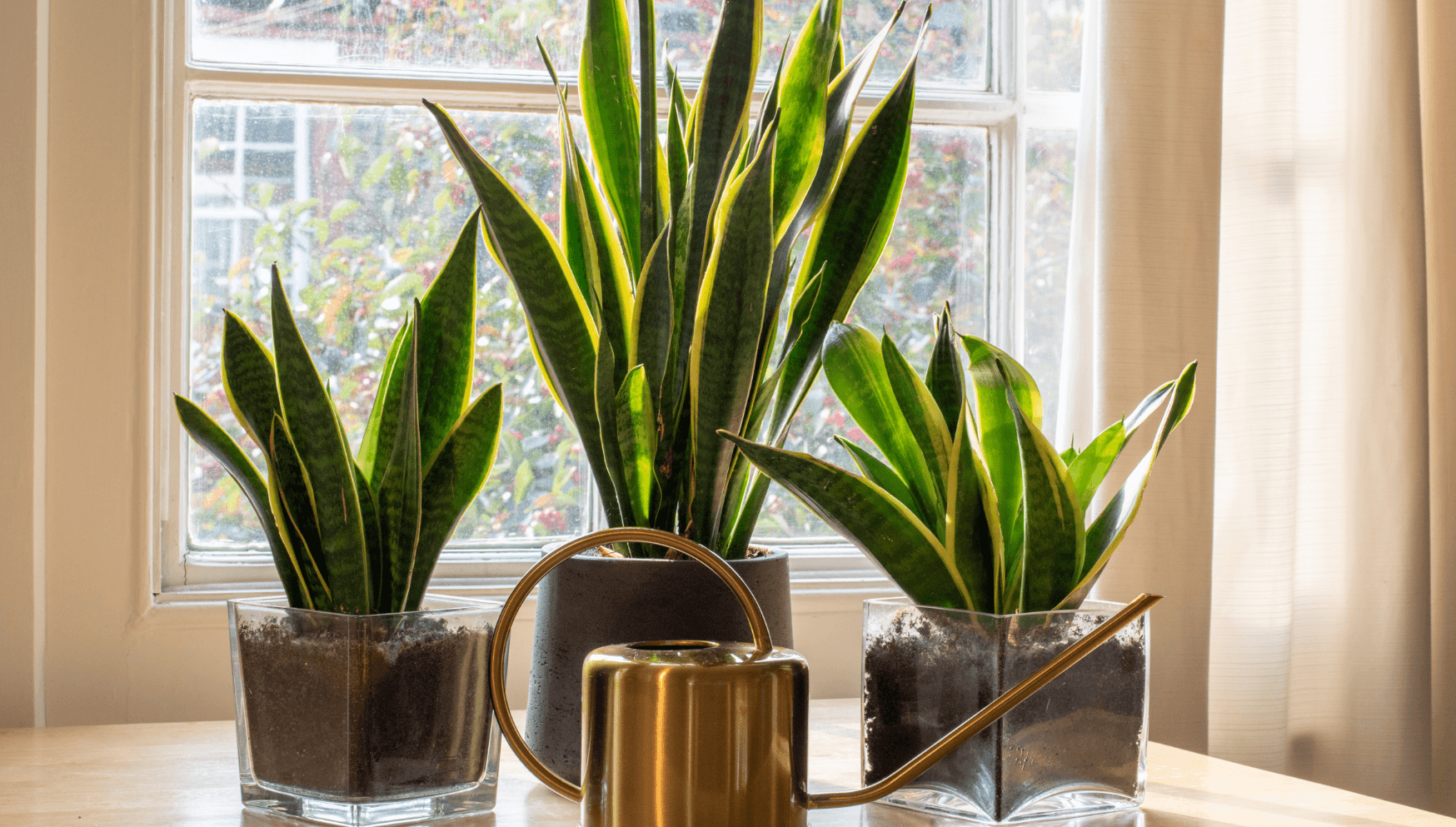Adding conservatory plants can add a new dynamic to your space. Creating an oasis of lush, green foliage can add more than just a fresh design feature.
Not only do plants improve the visual appeal of your space, but they also offer a host of benefits, including improved air quality and a boost to mental health.
In this blog, we’ll help you choose the best conservatory plants, considering factors such as natural light, temperature, and maintenance needs.
We will also provide tips on plant care and recommend useful apps to keep your green space thriving.
So, if you’re ready to bring some of the outdoors in, read on!
Why add plants to your conservatory?
Conservatories are perfect for plants due to their abundant natural light and controlled environment. Here are some reasons to consider adding plants to your conservatory:
- Improved air quality: Plants filter out pollutants – releasing oxygen, making the air cleaner and fresher.
- Refreshing aesthetics: A variety of plants can add colour, texture, and visual interest to your conservatory.
- Mental health benefits: Being surrounded by greenery has been shown to reduce stress, improve mood, and enhance overall well-being.
Choosing the right plants for your conservatory
Most conservatories receive plenty of natural light, but the intensity and amount of sunlight can change significantly throughout the day and across different seasons.
It’s important to choose plants that match the light conditions in your space to make sure they thrive.
Bright, direct light
Conservatories with large, south-facing windows or glass ceilings often receive bright, direct light for several hours each day.
This environment is ideal for sun-loving plants such as cacti and succulents. These plants are adapted to withstand intense sunlight and can store water in their thick leaves, making them perfect for such conditions. Examples include the Echeveria, Aloe Vera and Jade Plant (seen below).

Source: https://www.gardenersworld.com/how-to/grow-plants/how-to-grow-a-jade-plant-crassula-ovata/
Indirect light
You may have a conservatory that has areas that receive filtered or indirect light, especially those with shaded sections or north-facing windows.
Indirect light is softer and less intense, making it suitable for ferns and other shade-tolerant species. These plants thrive in the broken sunlight of forest floors and prefer the gentler light conditions found in these conservatory spots. Examples include the Boston Fern, Peace Lily and Maidenhair Fern (pictured below).

Source: https://www.gardenersworld.com/how-to/grow-plants/how-to-grow-maidenhair-fern-adiantum-raddianum/
Plants for warm conservatories
Warm conservatories keep a consistently warm temperature throughout the year, often because they are part of the main house’s heating or have a dedicated heating system. These conditions are ideal for tropical plants, which thrive in warmth and humidity. Tropical plants that enjoy warm climates are:
- Monstera Deliciosa: Known for its large, perforated leaves, this plant adds a touch of beauty to any space.
- Bird of Paradise: With its beautiful flowers, it brings a feel of the tropics to your conservatory.
- Ficus Benjamina: Also known as the weeping fig, this plant is easy to care for and grows well in warm conditions.
- Orchids – Check out these tips for easy to grow Orchids from the RHS
- Bromeliads – This diverse and exotic group of plants adds vibrant colour to any home. Since they are fragile, they thrive best as houseplants.
- Banana plants – The banana plant, with its large, lush leaves and striking presence, add a tropical feel to any indoor or outdoor space.
These plants can flourish in these environments, adding rich greenery and vibrant colours to your space. What’s great is that these plants often enjoy the higher humidity levels that can be maintained in a warm conservatory.
Hardy plants for changing temperatures
Unheated conservatories
If your conservatory is unheated, you’ll know that you can experience significant temperature fluctuations, especially during the colder months.
These spaces can become quite cold in winter, making them less suitable for delicate tropical plants.
Instead, look for hardier plants that can tolerate a range of temperatures. An example would be the Snake Plant, seen below.
Other plants that are extremely tolerant of varying conditions while also being low maintenance include:
- Aloe Vera: Not only does it thrive in different temperatures, but it also has medicinal properties.
- Spider Plant: Adaptable and resilient, it can survive in a range of conditions.
- Camellias: Can endure cooler conditions, and evergreen shrubs that are more resilient to temperature changes.
- Hardy succulents and certain species of palms can also adapt well to these environments, providing year-round greenery without the need for constant temperature control.
Understanding the temperature changes of your conservatory will help you choose plants that are suited to these conditions, giving you a thriving indoor garden that remains beautiful throughout the year.
 Source: https://plnts.com/en-gb/care/houseplants-family/sansevieria
Source: https://plnts.com/en-gb/care/houseplants-family/sansevieria
Low-maintenance plants for busy homeowners
If you have a busy lifestyle and need plants that require minimal care, here are three of the best low-maintenance plants that will give the greenery without the upkeep:
- ZZ Plant (Zamioculcas Zamiifolia): Known for its resilience to neglect, it thrives in low light and requires little watering.
- Pothos: The Pothos is a robust vine that can grow in various light conditions and only needs occasional watering.
- Cactus: Perfect for those who might forget to water regularly, cacti are very low maintenance and love sunny spots.
Flowering plants to brighten your conservatory
If you are looking for something to add colour to your conservatory – these flowering plants may be the answer:
- Orchids: These exotic flowers come in a variety of colours and are perfect for bright, indirect light.
- Hibiscus: With its large, vibrant flowers, it brings a burst of colour to your conservatory.
- Begonias: Available in many colours, begonias are easy to grow and brighten up any space.
Tips for plant positioning
Proper positioning of plants is important for their growth and health. Here are some tips:
Group plants by light needs
When arranging your plants, consider their needs and behaviour. Place plants with similar light requirements together to make sure they all receive the appropriate amount of light.
Rotate plants regularly
When you are in your conservatory, make sure that you turn them. This ensures all sides of the plant receive light and promotes even growth.
Use plant stands and shelves
To display your plants, use a variety of levels. You can use space-saving techniques like using vertical storage solutions.
Tips for plant care
Caring for your conservatory plants involves some level of upkeep to ensure they stay healthy and thriving. General care for your conservatory plants involves several key practices to ensure their health and vitality:
Watering
It’s crucial to water your plants correctly, providing just the right amount of moisture for each species. Be careful not to overwater, as this can lead to root rot and other issues, but also avoid underwatering, which can cause dehydration and wilting.
Feeding
To encourage healthy growth and development, consider fertilising your plants with the correct nutrients, particularly during the growing season. Choose fertilisers made for each specific plant type to make sure they get the right nourishment.
Pruning
Regular pruning is important for maintaining the appearance and well-being of your plants. Remove dead, damaged, or yellowing leaves to help with new growth and prevent the spread of disease. It is also advised to trim back overgrown branches or stems, which can help with the plant’s shape and size.
By following these general care tips, you can help your conservatory plants thrive and flourish in their indoor environment.
Do plants help with mental health?
It has been proven that having plants in your living environment can really have a positive impact on your well-being. Here are some of the ways they can help:
- Reduction in stress: Being surrounded by greenery can help reduce stress levels. Natural environments promote relaxation by lowering cortisol levels, the hormone associated with stress. This effect is due to the calming nature of green spaces, which can provide a break from the overstimulation often found in urban settings.
- Improved mood: Greenery has an actual impact on mood improvement. Exposure to natural landscapes can increase the production of serotonin, a neurotransmitter that contributes to feelings of well-being and happiness. The appealing look of plants and trees, along with the fresh air and natural light, can help lift mood and create a sense of tranquillity.
- Better overall well-being: Regular interaction with green spaces can improve overall well-being by promoting physical activity, which is closely linked to mental health. Activities such as gardening, walking, jogging, or even sitting in a park encourage a more active lifestyle, which releases endorphins, known as “feel-good” hormones.
- Cognitive benefits: Exposure to nature has been shown to improve cognitive functions such as attention, memory, and creativity. The natural environment provides a restorative experience, helping to reduce mental fatigue and improve focus. This can be particularly beneficial for those with high-stress jobs.
- Therapeutic effects: Horticultural therapy, which involves gardening and plant-based activities, has been found to be highly therapeutic. This type of therapy can help individuals with depression, anxiety, and other mental health issues by providing a sense of purpose, accomplishment, and connection to nature.
- Mindfulness and meditation: Green spaces provide an ideal environment for mindfulness and meditation practices. These practices help reduce anxiety and promote a sense of peace.
Useful apps for plant care
There are a range of apps for your smartphone that can help keep your plants healthy and provide tips for looking after them. Here are some popular options:
- PlantSnap identifies plants and provides care tips.
- Gardenia offers a great plant care schedule and reminders.
- Plant Diary allows you to track the health and growth of your plants.
Start planting and enjoy your green space
Creating a conservatory garden can be a really rewarding experience. It can totally transform your space into a relaxing retreat full of plant life.
With the right plants and proper care, your conservatory can become a lush oasis that enhances your home and well-being.
Ready to upgrade your conservatory with beautiful design? Visit our blog to explore more tips and products to create your perfect space.
For advice on how to maintain a constantly comfortable space, contact us today!


